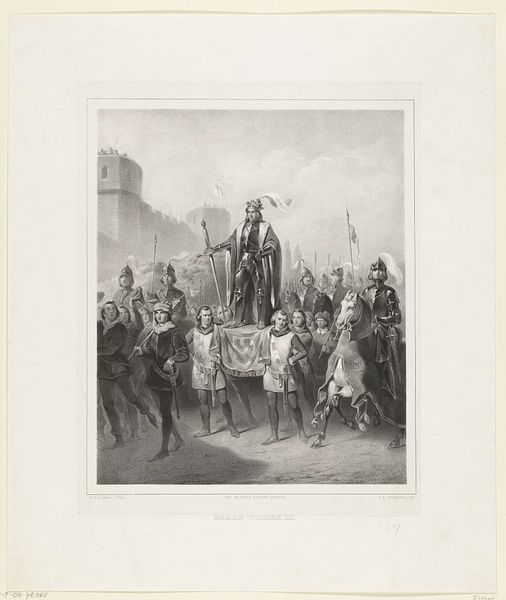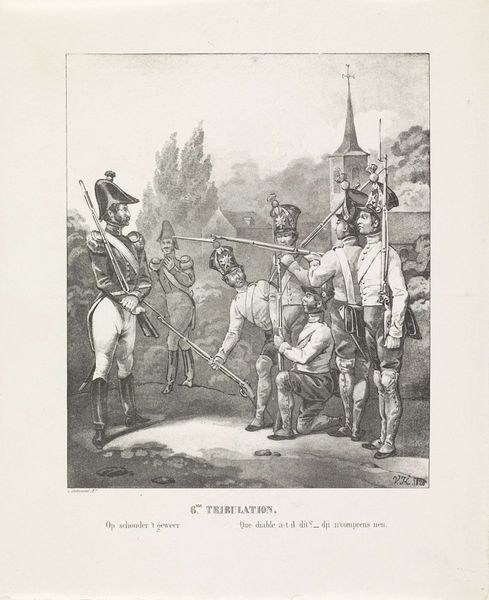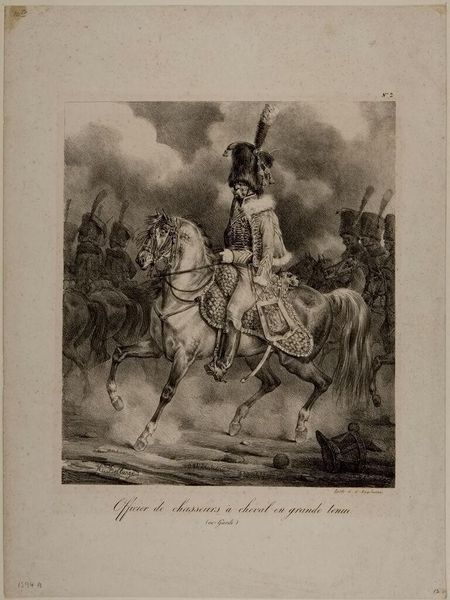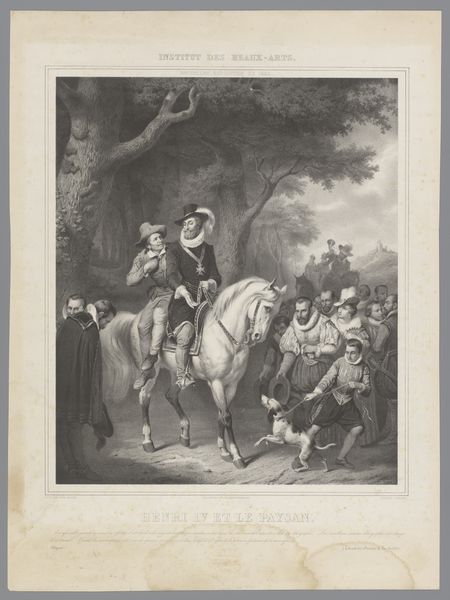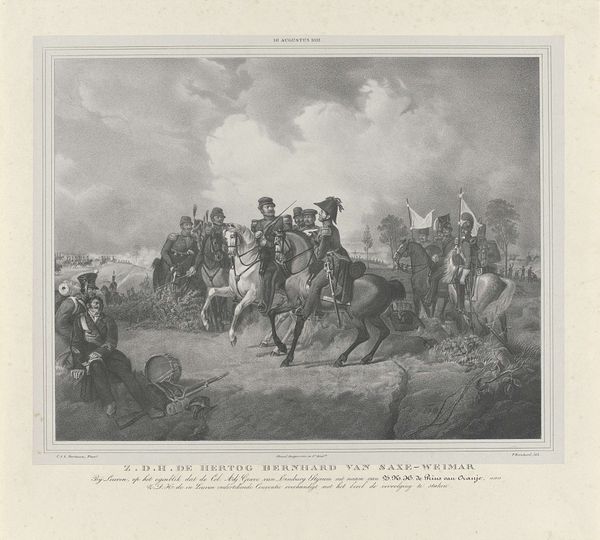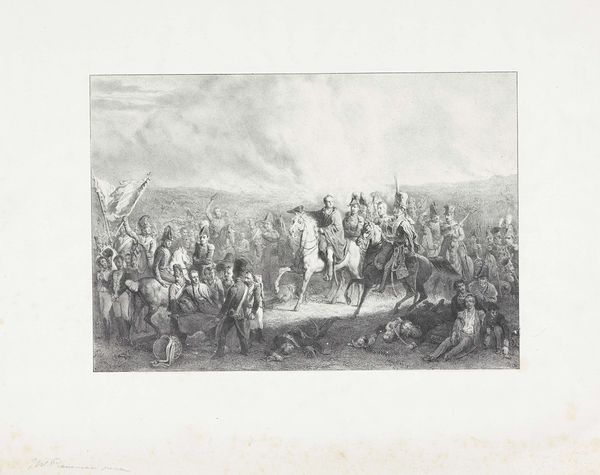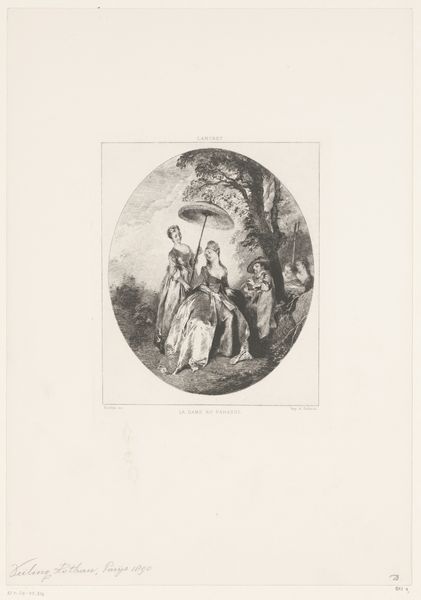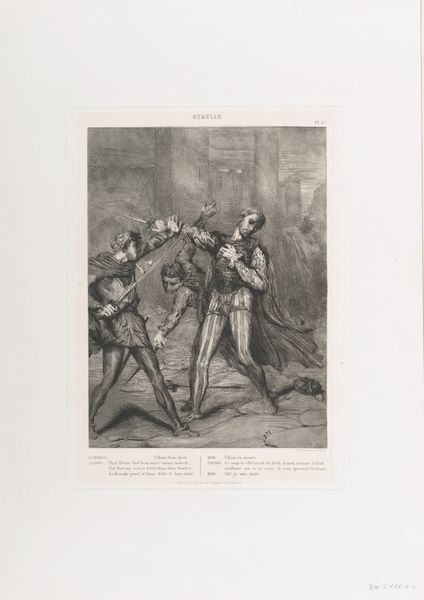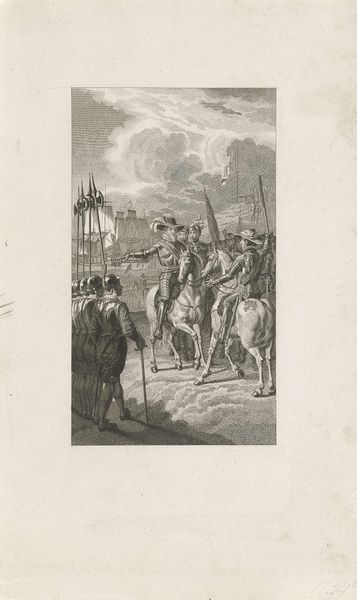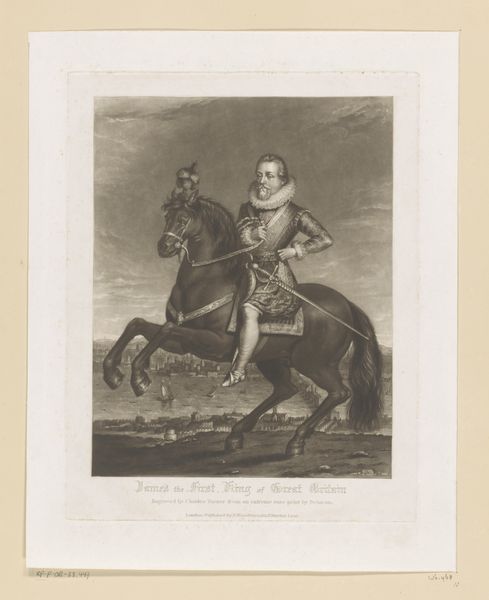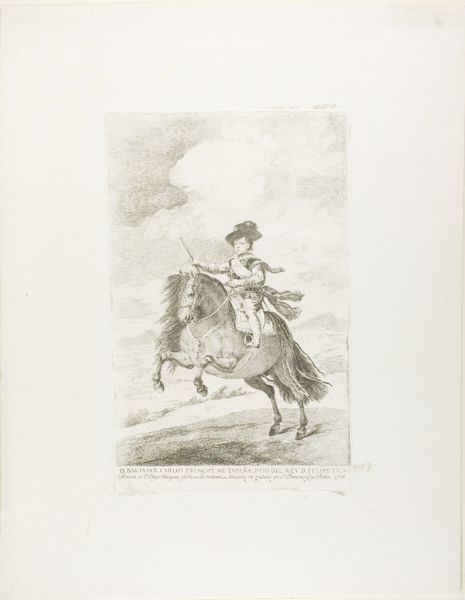
Dimensions: height 400 mm, width 313 mm
Copyright: Rijks Museum: Open Domain
Curator: Oh, it's dramatic, isn't it? Dark, urgent... feels like a stage play. Editor: Indeed. We’re looking at a print—an engraving, possibly from 1829—depicting Willem III aan de schouder gewond bij de slag aan de Boyne, 1690—or, William III wounded in the shoulder at the Battle of the Boyne. It’s attributed to William Giller. My first thought goes straight to its mode of reproduction. Think about the labor and tools to create this multiplied image... Curator: Absolutely, the artistry! Yet for me, it speaks more of vulnerability amidst the swagger. William, centre stage, but slightly… disheveled. Heroism tinged with real, palpable pain. You almost wince. He's holding his injured shoulder... isn't war bizarre like that? Editor: It makes me think of propaganda. Reproducing and circulating imagery like this shapes perceptions. It's interesting how engraving makes even flesh appear uniform and repeatable. Consider how many impressions were pulled, how far this image traveled. Curator: Yes, and this circulation embeds this potent story in public memory! This 'fortunate escape'... fortunate, really? Lucky to be alive maybe? It feels like myth-making more than an accurate record. History sanitised, ready for mass consumption. Editor: Definitely! Note the use of line, clearly defining contours, suggesting textures. I find it curious the level of detail lavished on the attire, compared to what appears to be just churning landscape. Fabric here, rendered with loving care—but for what purpose? How does luxury material speak of legitimized power? Curator: Ah, but luxury tells such convincing stories. Even the turbulent skies become a character...reflecting William's internal drama, maybe his doubts—whispering on the wind before being ultimately silenced by triumph. A battle waged in the soul, and then etched for posterity, repeated and passed on and on... Editor: I appreciate the layered social, economic, and production contexts. We can look at even seemingly representational forms to unpack their means and motivation for creation. Curator: It really goes beyond simply looking... we must really sense the complex story here. Editor: Yes, perhaps it should make us ask some uncomfortable questions. Who benefited, and who paid the price.
Comments
No comments
Be the first to comment and join the conversation on the ultimate creative platform.
